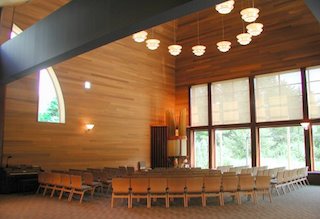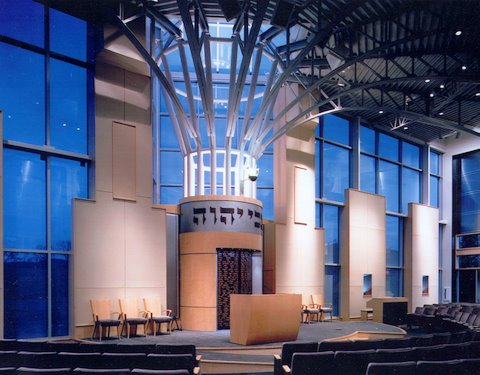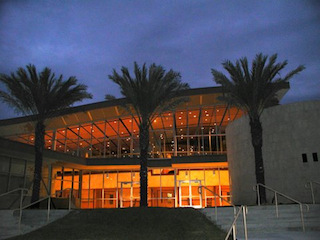
Process
Michael Landau Architects’ design work expresses our client’s spiritual values in the physical environment.
We design spaces that are uplifting and thereby enhance the religious experience. We rely on elegant but simple solutions that maintain focus on the activities within.
Michael Landau Architects brings the same level of commitment to the technical aspects of each project. Our experience support the technical excellence required to produce durable, environmentally friendly, maintainable buildings that bring lasting value to our clients. We respect the requirements of schedule and budget by producing cost-effective buildings in a timely way.
Our approach focuses on listening and understanding the vision of our clients. We listen first, allowing the voice of the congregation to shape our design solutions. The success of our projects has depended on hearing our clients and transforming their vision into significant architecture.
Design With a Spiritual Connection: Michael Landau on Navigating the World of Synagogue Architecture
(Originally published on the Huffington Post, by Steve Mariotti)
Designing synagogues is not exactly a growth industry—quite the opposite—but designer/architect Michael Landau has been doing it for 40 years, and isn’t showing signs of slowing down.

Michael working with his clients
With more than 50 synagogue clients throughout the United States to his credit, Landau, is one of a small handful of people specializing in this narrow field.
“Can you design a space that has a spiritual connection? Landau asks rhetorically. “It takes special creative talent, and a great client who appreciates that,†to succeed in this field, Landau said, speaking in the apartment/workspace, next door to the eponymous Nassau Street store his family has run for more than 100 years.

Hevreh of Southern Berkshire
Landau divides his time between Princeton, where he partners with architect Joshua Zinder [Landau | Zinder], and Chicago, where three of his grandchildren are and where he works with another synagogue/church designer, Paul Harding [Landau | Harding]. The synagogue design world is a small fraternity.
The business now consists of about 20-30 potential projects in the United States annually, and is about 80% modification/renovation of existing structures, and 20% new construction. He tells me that the business is contracting, rather than expanding across the board, with the exception of Orthodox synagogues.
Even then, many projects get started but then are not completed most often due to lack of funding. He has had experiences like this with projects in Plano, TX and Kansas City, KS; and the rebuilding of a synagogue destroyed by Hurricane Katrina in Biloxi, MS.
Landau tells us, “some of my most meaningful designs are still just drawings.â€

Unbuilt Synagogue Design
What often happens is a congregation will hire the architect before identifying the total fundraising requirements to build or renovate the structure.
“The problem for the congregation is: What is it going to cost, and where are we going to get the money?†Landau said. Sometimes it doesn’t work out. “You get paid for work you’ve done, but usually that is a token amount,†said Landau.

Congregation Micah in Brentwood, TN
And there are always multiple issues to deal with—from conflicting priorities of the congregation to egos and politics, from environmental concerns, which are becoming more important—to idiosyncratic developments. One such example was a growing congregation that wanted to relocate because it is currently renting space adjacent to a large mosque, leading to some anxiety.
But Landau is proud of the work he has done designing and building temples in such far flung locations as Raleigh, NC, where he lived after graduating from the University of Virginia and working with famous architects in New York City. Later he moved on to projects in Brentwood, TN, Great Barrington, Evansville, IN, MA, Orlando, FL, Kansas City, KA, Bellingham, WA, Plano,TX, Manchester, VT and many in NJ and North Carolina.
And he remains hard at work, modifying an historic temple in Jersey City whose congregation shrunk from about 750 families to about 250 families in a few years, and even renovating a black Orthodox Jewish congregation in Bedford-Stuyvesant, Brooklyn.
Asked if he should have stayed in the more lucrative corporate world, designing some of the projects he worked on when he was just starting out, Landau said, “Should I have done that? I don’t think so. There are so many other kinds of rewards in what I do now.â€

Temple Israel, Orlando, FL